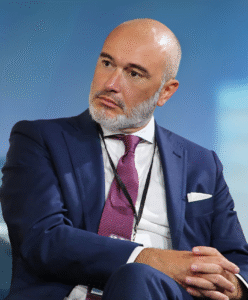
Why Skills-First Leadership Is Replacing the Ivy League Playbook in the C-Suite
The old prestige pyramid—where Ivy League degrees and blue-chip consulting backgrounds paved the way to the CEO seat—is cracking.

The Federal Reserve’s (Fed) influence on the stock market appears to be diminishing, mirroring a similar trend with inflationary pressures. This development signifies a potential shift in the dynamics that have shaped market behavior in recent years.
The Fed’s influence stemmed primarily from its quantitative easing (QE) programs, which were implemented after the 2008 financial crisis and the COVID-19 pandemic. These programs involved large-scale asset purchases by the Fed, which injected significant liquidity into the financial system and helped prop up stock prices.
However, with inflation reaching multi-decade highs in 2022, the Fed pivoted towards a tightening monetary policy stance. This involved raising interest rates and reducing its balance sheet through quantitative tightening (QT), which was intended to curb inflation by slowing economic growth and reducing demand.
Recent data suggests that the Fed’s policy shift has had its intended effect. Inflationary pressures have begun to show signs of moderation, offering some relief to consumers and businesses. Correspondingly, the stock market has exhibited a degree of resilience in the face of rising interest rates. While some volatility has been observed, overall market corrections haven’t mirrored the dramatic swings witnessed during periods of heightened Fed intervention.
Several potential explanations can be offered for the stock market’s relative stability amidst the Fed’s tightening measures:
Acknowledging that the Fed’s reduced influence on the stock market does not signify a complete withdrawal is important. The central bank’s monetary policy decisions will continue to shape the economic landscape, which can indirectly impact stock prices. However, the Fed’s era as the primary driver of market movements appears to be waning.
Looking ahead, investors will likely focus on a broader range of factors when making investment decisions. These factors include corporate earnings reports, economic data releases, and global geopolitical developments. The Fed’s monetary policy pronouncements will undoubtedly remain a point of interest, but their influence on market sentiment may be less pronounced compared to the recent past.

The old prestige pyramid—where Ivy League degrees and blue-chip consulting backgrounds paved the way to the CEO seat—is cracking.

Loud leaders once ruled the boardroom. Charisma was currency. Big talk drove big valuations.

But the CEOs who make history in downturns aren’t the ones with the deepest cuts

Companies invest millions in leadership development, yet many of their best executives leave within a few years. Why?

The most successful business leaders don’t just identify gaps in the market; they anticipate future needs before anyone else.

With technological advancements, shifting consumer expectations, and global interconnectedness, the role of business leaders

Following a distinguished Law Enforcement career Joe McGee founded The Securitatem Group to provide contemporary global operational specialist security and specialist security training products and services for private clients, corporate organisations, and Government bodies. They deliver a wide range of services, including complete end-to-end protection packages, close protection, residential security, protection drivers, and online and physical installations. They provide covert and overt investigations and specialist surveillance services with a Broad range of weapons and tactical-based training, including conflict management, risk and threat management, tactical training, tactical medicine, and command and control training.

Jay Wright, CEO and Co-Owner of Virgin Wines infectious energy, enthusiasm, passion and drive has been instrumental in creating an environment that encourages talent to thrive and a culture that puts the customer at the very heart of every decision-making process.

Fabio de Concilio is the visionary CEO & Chairman of the Board at Farmacosmo, a leading organization dedicated to mental health and community support services. With a deep commitment to identifying and meeting customer needs, Fabio ensures that high standards are maintained across the board.

Character Determines Destiny – so said Aristotle. And David CM Carter believes that more than anything else. For David, it has been numerous years of research into codifying Entelechy Academy’s 54 character qualities that underpin everything he stands for as a leader and teacher.


Leave us a message
Subscribe
Fill the form our team will contact you
Advertise with us
Fill the form our team will contact you